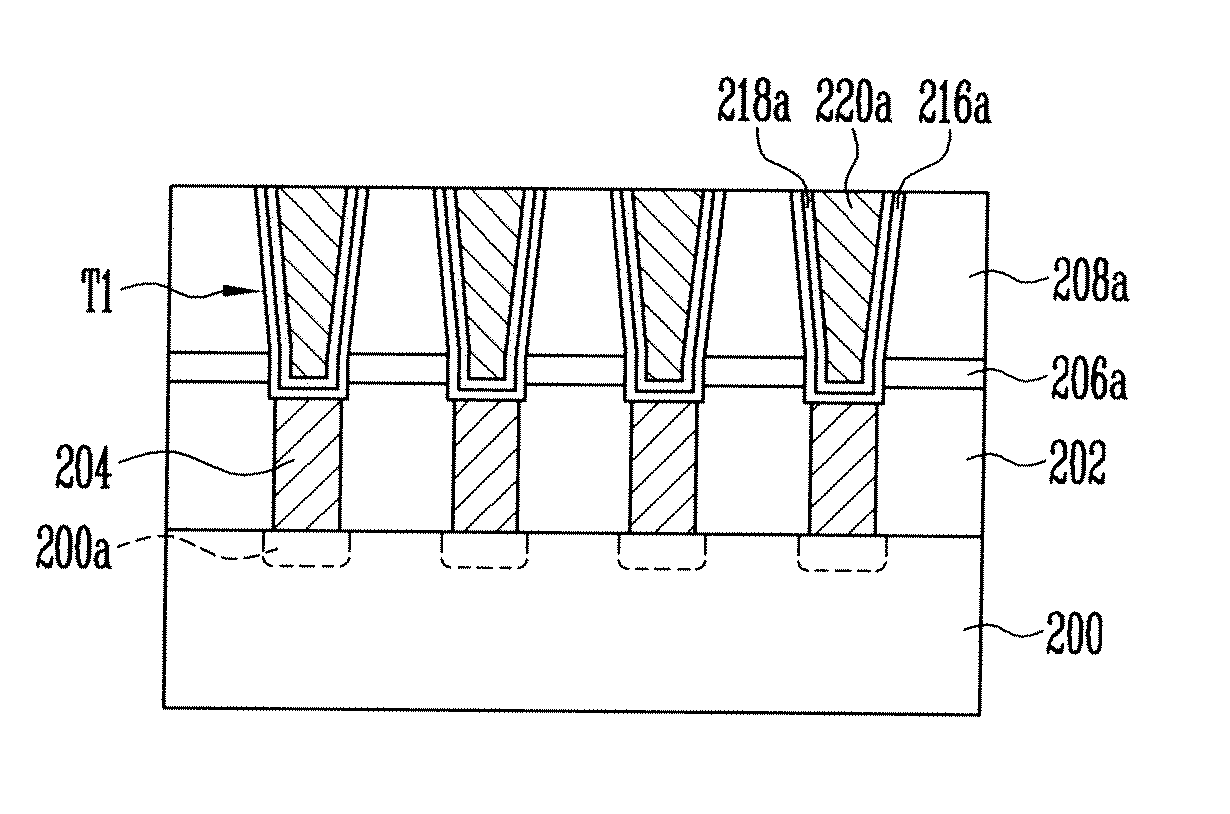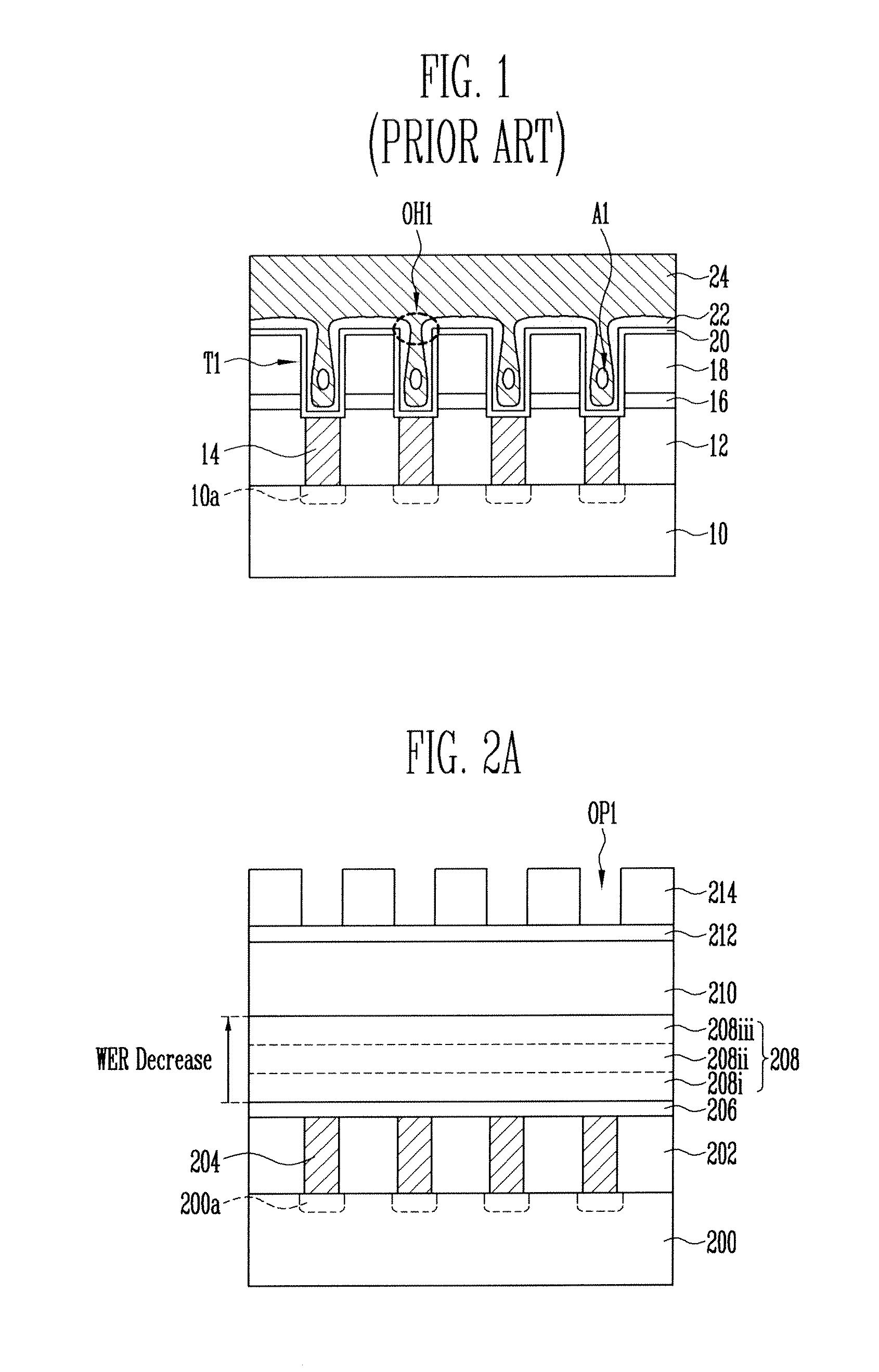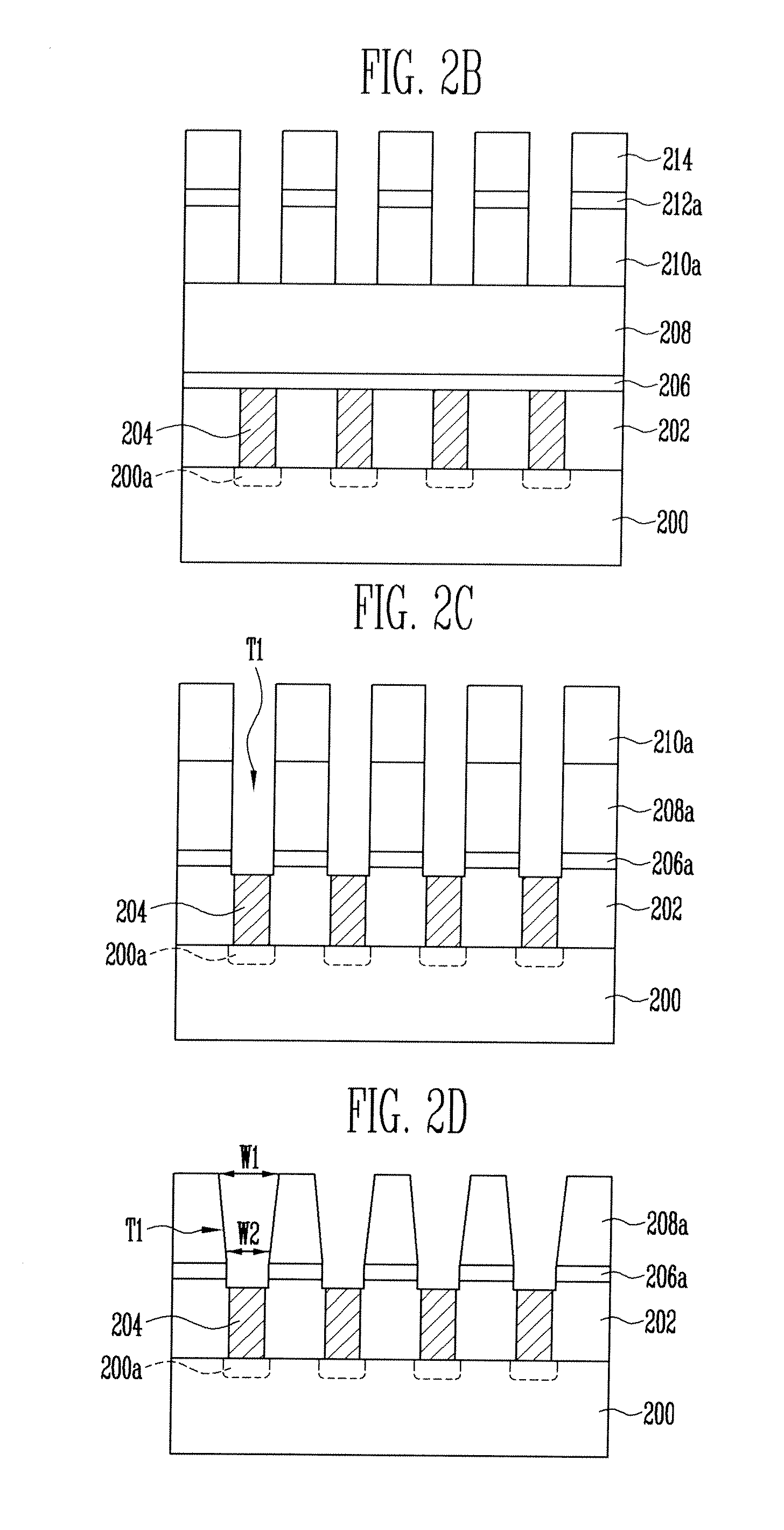Method of Manufacturing Semiconductor Devices
- Summary
- Abstract
- Description
- Claims
- Application Information
AI Technical Summary
Benefits of technology
Problems solved by technology
Method used
Image
Examples
Embodiment Construction
[0022]Hereinafter, an exemplary embodiment of the disclosure is described in detail with reference to the accompanying drawings. The drawing figures are provided to allow those having ordinary skill in the art to understand the scope of the embodiment of the disclosure.
[0023]FIGS. 2A to 2G are cross-sectional views illustrating a method of manufacturing semiconductor devices according to an exemplary embodiment of this disclosure.
[0024]Referring to FIG. 2A, a first dielectric interlayer 202 and contact plugs 204 are formed over a semiconductor substrate 200 having junctions 200a formed therein. Preferably, the first dielectric interlayer 202 is formed on the semiconductor substrate 200. After contact holes are formed in the first dielectric interlayer 202 to expose the junctions 200a, the contact holes are filled with a metal material to form the contact plugs 204.
[0025]An etch-stop layer 206, a second dielectric interlayer 208, a hard mask layer 210, and a bottom anti-reflective co...
PUM
 Login to View More
Login to View More Abstract
Description
Claims
Application Information
 Login to View More
Login to View More - R&D
- Intellectual Property
- Life Sciences
- Materials
- Tech Scout
- Unparalleled Data Quality
- Higher Quality Content
- 60% Fewer Hallucinations
Browse by: Latest US Patents, China's latest patents, Technical Efficacy Thesaurus, Application Domain, Technology Topic, Popular Technical Reports.
© 2025 PatSnap. All rights reserved.Legal|Privacy policy|Modern Slavery Act Transparency Statement|Sitemap|About US| Contact US: help@patsnap.com



